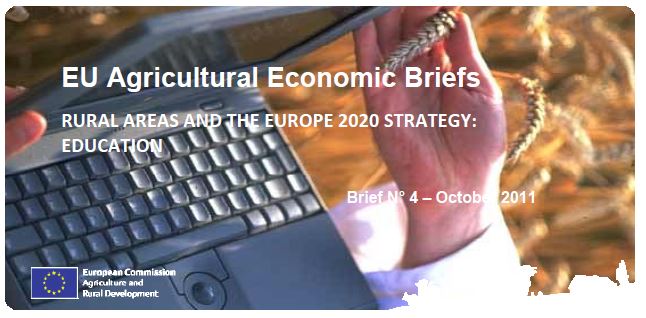EU Agricultural Economic Briefs-RURAL AREAS AND THE EUROPE 2020 STRATEGY: EDUCATION
Two of the five headline targets of the Europe 2020 Strategy for smart, sustainable and inclusive growth are aimed at raising employment and education levels. The latter should be achieved by reducing school dropout rates to 10% or less, and by increasing completion of third level education by people aged 30-34 years to at least 40% in 2020. According to the latest statistics, the percentage of school dropouts in the EU was 14.4% in 2009 whereas the percentage of the population aged 30-34 years with a tertiary education degree reached 32% in the same year. In this context, rural areas deserve special attention. With the recent enlargements of the EU, the rural population has considerably increased (from 75 million to 116 million). Moreover, rural areas present, in general, lower rates of tertiary education and higher rates of school dropouts. Therefore, the improvement of both indicators in the rural areas of the EU is crucial for the attainment of the Europe 2020 headline targets. This economic brief examines the latest statistics on school dropout rates among the people aged 18-24 years and the percentage of people aged 30-34 years with tertiary education in the EU-27. In concrete, we will focus on the situation in rural areas and their degree of achieving the targets of the Europe 2020 strategy. A better educated labour force is a key element for the competitiveness of the economy. Reduced school dropout rates and the attainment of tertiary education by a greater share of the population serve as indicators for measuring the realization of Europe 2020 headline targets.
